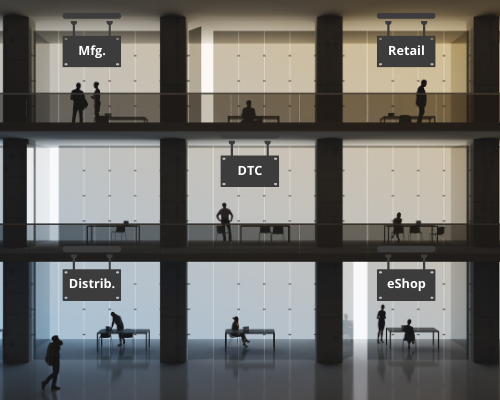You can try and blame the need for speed on Amazon, with two-day delivery becoming one day and even same day in some instances. But all they’re doing is perfecting what we all want – immediate gratification. The double whammy of the Amazon Effect- and the COVID-19-induced exponential eCommerce spurt is pulling us along at a faster pace than we ever envisioned.
The quest is not new, it’s just now entered onto everyone’s radar. It’s been accelerated. With eCommerce growing more in three months than in the previous ten years, the pressure is on for companies to get moving, regardless of industry segment or business model – we are all affected.
For many, the need for speed is twofold: the urgency to satisfy customers much quicker – whether B2B, B2C, DTC, or brick and mortar – and the subsequent race to get a system in place fast that can deliver on that imperative before your business falls behind. As they say, “time is of the essence.”
Both types of velocity are incredibly attainable today, so what’s holding companies back?
The Major Holdbacks
Balance Sheet Impact
Given the investment and natural systemic institutionalization over time, I believe many companies are still operating derivations of aging systems, many installed before the internet.
Because of the way these older systems are accounted for in US GAAP, they’ve been capitalized. Quick, substantive changes with yet another IT upgrade could require writing off sizeable investments early as impaired assets.
Many businesses are complex and use different systems to handle different needs: manufacturing, retail, multi-tier distribution, DTC, and online marketplaces. It’s not unusual to have 3-4 systems within the same company, tied together by a cross-platform financial reporting package.
You may already be “omnichannel” without realizing it, in which case you’re likely shouldering many of the expenses with hardly any of the benefits of doing it that way. As I’ve mentioned before, organizations are not optimizing across systems but within silos and not necessarily giving their customers or themselves the benefits of a smooth, seamless, and cohesive architecture.
Broken Promises
There is still the belief that IT investments are a “black hole” and never on schedule. This can be true if not planned properly. Most companies can minimize surprises and setbacks and meet their timelines and budgets. If done right, implementations need only take months instead of a year or more.
In addition to the relatively quick speed of implementation, one of the many benefits of software-as-a-service (SaaS), is their subscription model. The cost of SaaS is expensed over the subscription period, so it’s written off as it’s used, not capitalized. This makes it easier to take on the transformation needed.
A unifying SaaS platform will also link multiple systems to work as one, so companies won’t have to throw out what they have. Integrating SaaS solutions that enhance legacies becomes achievable and affordable. Think of it as the glue that binds together disparate systems.
The Concept of Additive Computing
We’ve all heard of additive manufacturing. As a similar concept, I refer to SaaS coexisting with legacy systems as “additive computing.” The flexible SaaS modules layer upon the existing systems and together they can trigger meaningful improvements to achieve sometimes step-change results. By doing so, your business may be able to avoid taking an impairment charge on the legacy system because you will still be using it in conjunction with the additive SaaS pieces.
Fourteen years ago, I was introduced to the agile methodology of software project management and became a believer. It’s very different from what most of us have experienced with legacy enterprise systems. The agile approach drives continuous and frequent delivery, in small bits, of your software platform, making it dynamic and responsive to today’s changing needs and enabling transformative shifts without disruption. Therefore, agility is the best way to think about road-mapping your transformation.
You owe it to yourself to take a hard and quick assessment of what you have and what you require to succeed with the need for speed. Given the vast evolution technology has taken, you’ll find that a unifying SaaS platform will not only enhance velocity, but deployment itself won’t be the cumbersome and costly initiative you expect.






